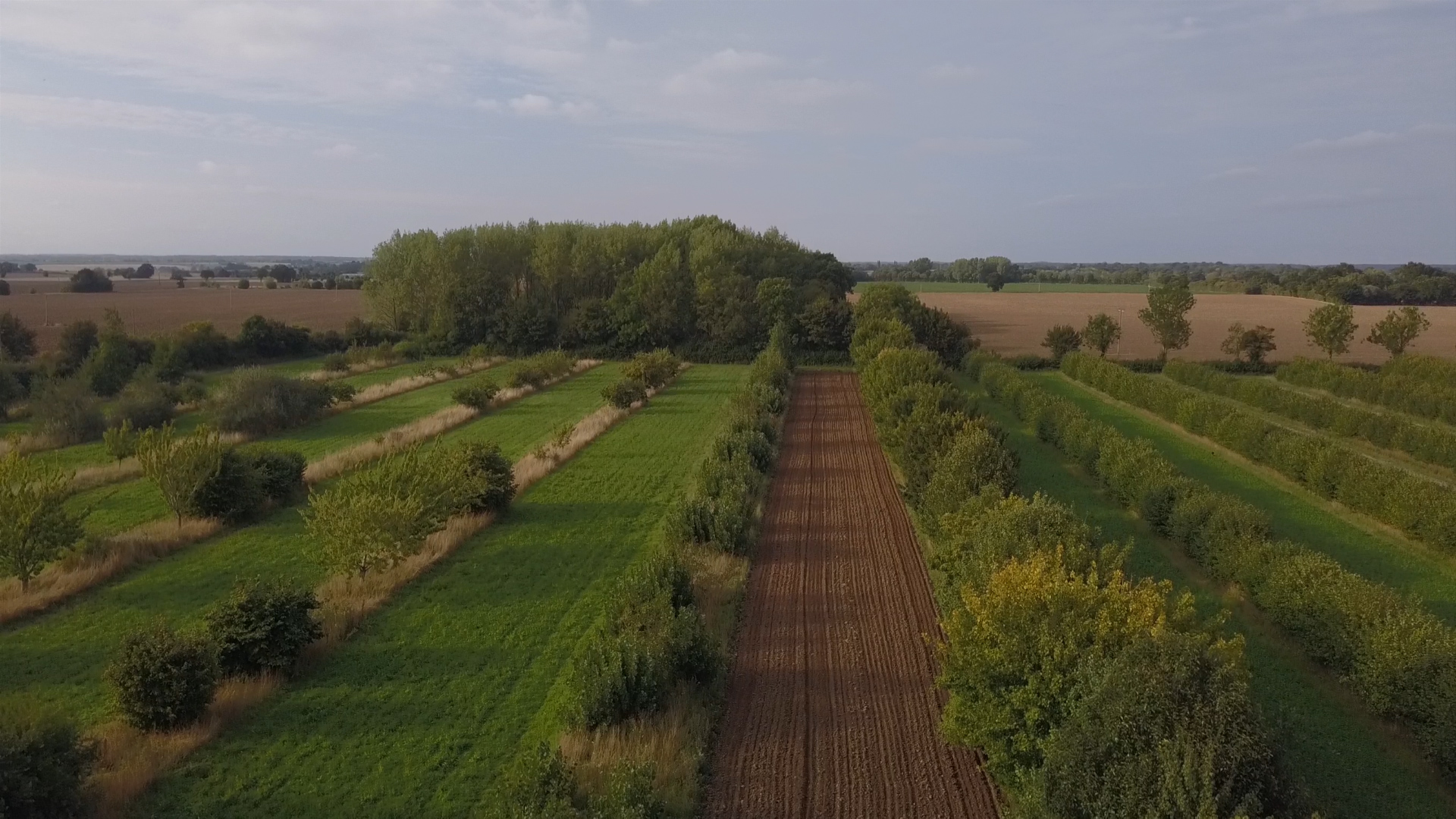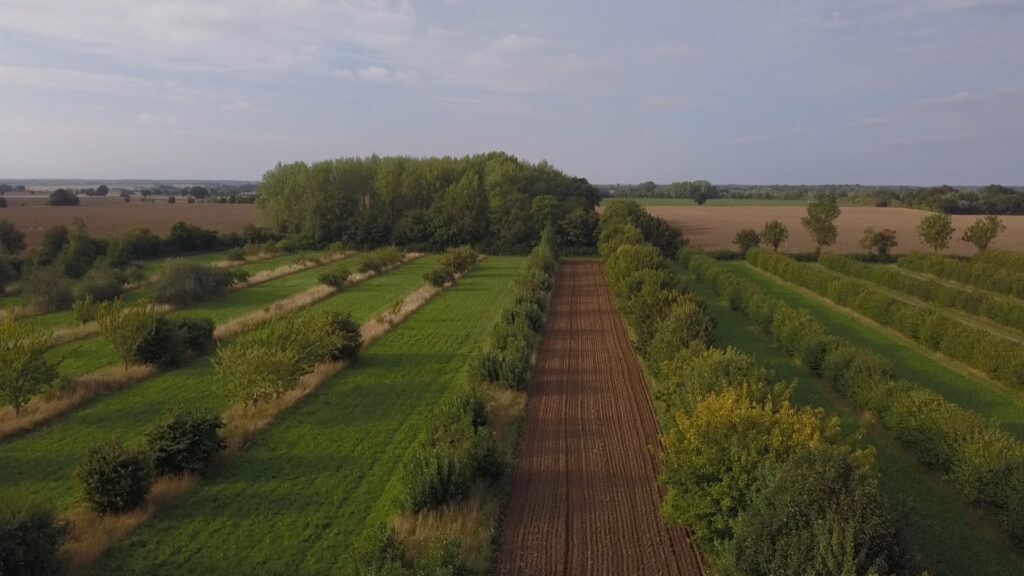
As part of National Tree Week, the University of Reading and Forest Research have launched a new Tree Species Guide for agroforestry. In this blog, the guide’s co-authors Tom Staton and Tom Breeze explain how helping farmers plant the right trees in the right place can bring a wealth of benefits to agriculture in the UK.
Agroforestry for sustainable farming and climate resilience
In a world facing environmental challenges such as climate change, biodiversity loss and soil degradation, farming is no longer just about producing food. Today, farmers are on the front line of efforts to limit climate change, restore biodiversity and protect soils – all while continuing to feed a growing population.
One solution to these challenges is agroforestry, a farming practice that combines trees with crops or livestock animals. The concept is not new; in fact, the earliest forms of agriculture likely involved farming with trees. Recent research, in which the University of Reading has played a key role, confirms the wisdom of these ancient methods: trees help protect soil, attract pollinators and other biodiversity, and offer resilience against weather extremes like droughts and floods. Modern agroforestry combines these traditional practices with current technology, enabling farmers to use large-scale machinery alongside productive trees. Trees in arable cropland, for example, are typically planted in rows 24 meters apart – just the right size for equipment like harvesters and sprays.
One particularly well studied agroforestry farm is Whitehall Farm in the Cambridgeshire Fens. The farmers planted strips of apple trees across their farm in 2009 to help stop soil erosion from ‘The Fen Blow’ – a phenomenon where high winds whip across the flat land blowing topsoil off fields. Research carried out at Reading has shown that the trees have also helped to boost bee species, attract predators of pests, and encourage earthworms which are vital for good soil health.
The benefits are not only environmental; models developed at Reading have demonstrated that this way of farming can be more profitable in the long-term. The convincing evidence of the benefits of agroforestry has prompted the UK government’s Department for Environment Food and Rural Affairs (Defra) to offer financial incentives for farmers to incorporate trees into their farming systems as part of post-Brexit agricultural reforms.
However, scientific evidence and funding alone aren’t enough – farmers also need practical guidance to implement agroforestry effectively. Each farm has unique conditions and goals that will influence tree selection. Furthermore, planting trees requires a long-term commitment and investment, so making the right choice from the beginning is essential.
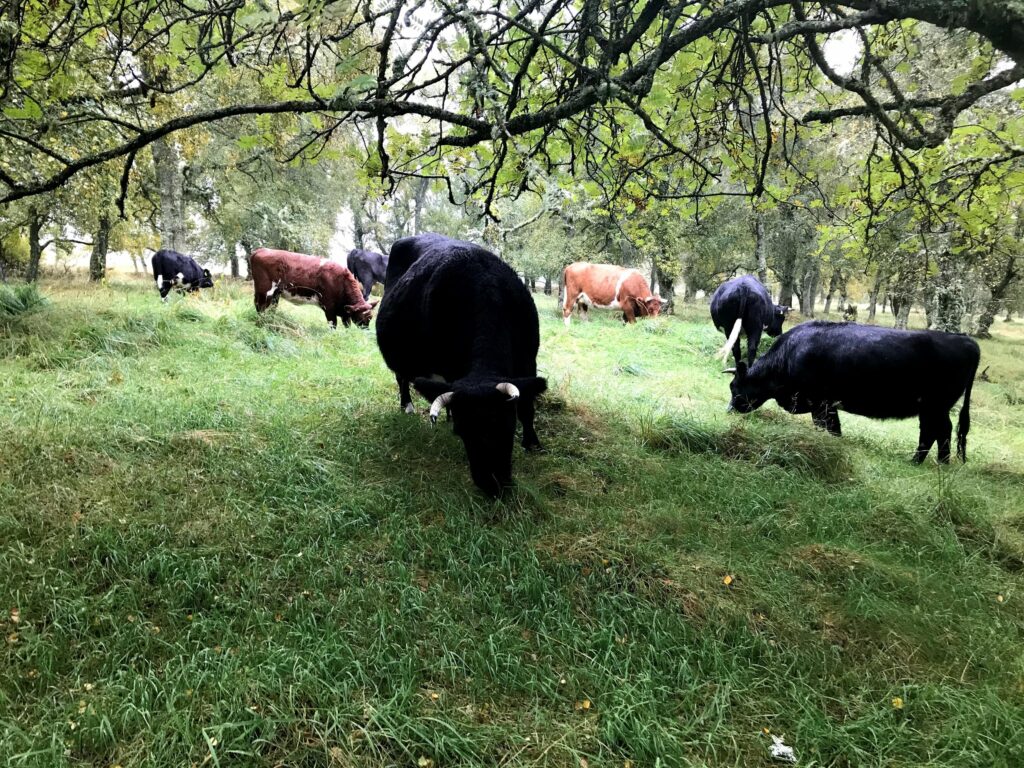
Choosing the right trees: a balancing act
Selecting appropriate tree species for a farm can be a complex decision. Different trees provide different products and benefits: some are grown for timber, others for fruits, nuts, or even bioenergy. Trees also vary in their ability to capture carbon, support biodiversity and protect soils. Additionally, each tree species has specific requirements for soil type, rainfall and temperature, making it essential to match the right tree with the right environment.
While there is already good guidance on selecting tree species for timber forests, information on how to choose trees for farmland has until now been fragmented and difficult to locate. This new Tree Species Guide is designed to fill that gap, offering farmers clear and accessible advice on the best tree options for their unique needs.
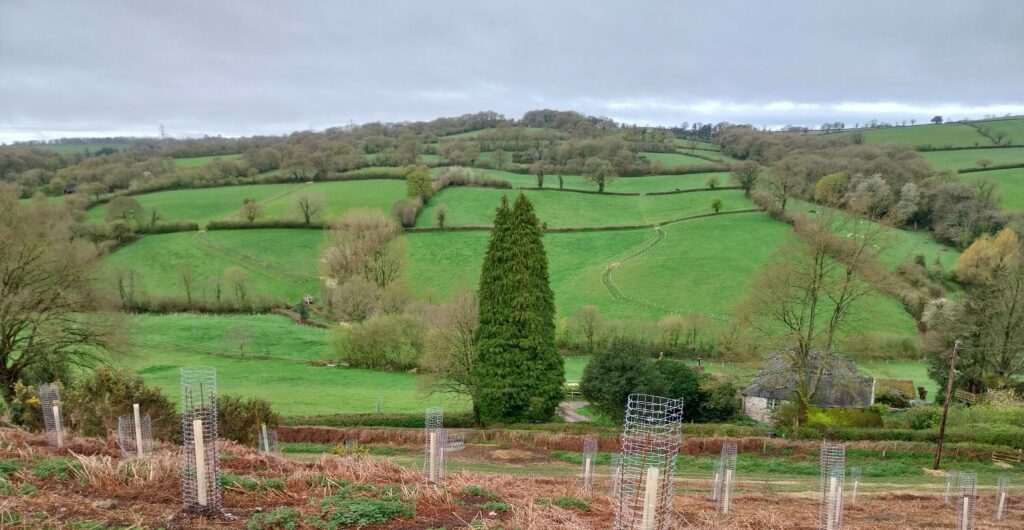
The Tree Species Guide: a practical tool for farmers
The new guide focuses on 33 tree species suitable for agroforestry. Each species is assessed based on its environmental preferences, productivity and ecological benefits, with ratings assigned using simple terms such as “high,” “medium” or “low.” These ratings are based on a review of the literature and supported by a detailed database for those who want to dive deeper. The guide was developed with input from a network of experts and stakeholders, ensuring it meets the real-world needs of farmers.
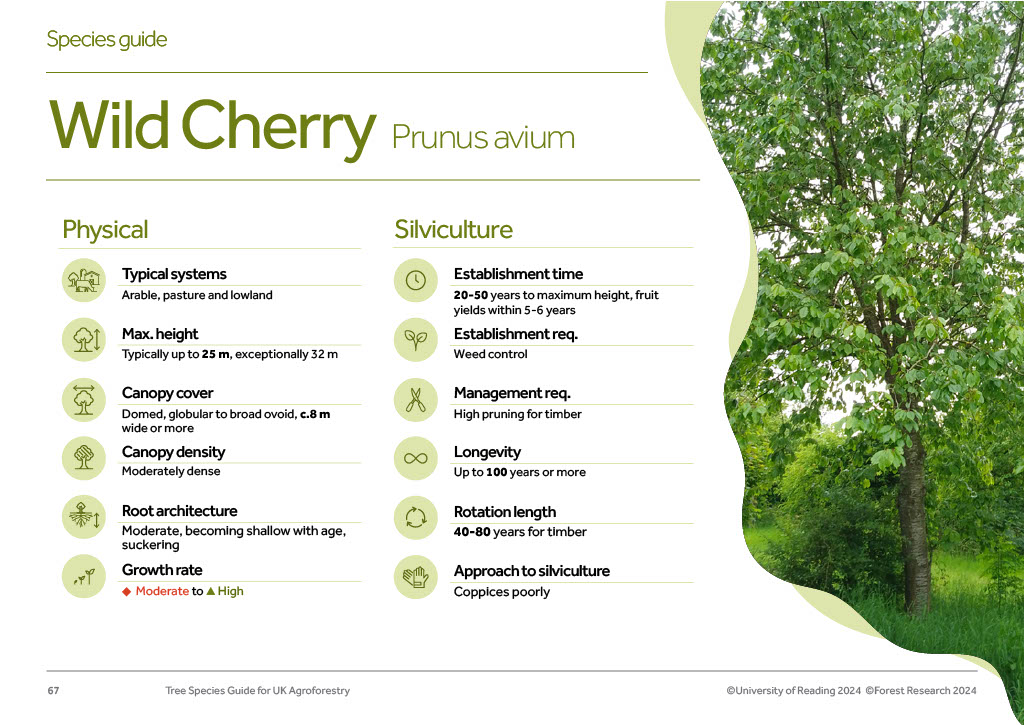
Looking ahead, the guide will continue to evolve, incorporating feedback from users and new scientific findings. Future updates may also include additional tree species. There is even a plan to convert the guide into an interactive online tool, allowing users to filter tree options based on their specific goals and preferences.
With resources like this guide, choosing the right trees for agroforestry doesn’t have to be overwhelming. By supporting farmers in making informed decisions, we’re one step closer to a future where farms not only feed us but also help create a more resilient environment for generations to come.
Tom Staton is Postdoctoral Research Associate in Agroforestry Systems and Tom Breeze is Senior Research Fellow in Ecological Economics. They are both part of the School of Agriculture, Policy & Development at the University of Reading.
The Tree Species Guide for UK Agroforestry Systems is available for free download from Forest Research.

